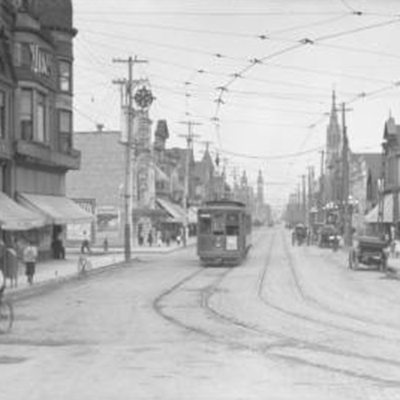
By the turn of the nineteenth century, Poles on Milwaukee’s South Side had developed a largely self-sufficient community. The neighborhood supported hundreds of small businesses concentrated on Mitchell Street and, to a lesser extent, Lincoln Avenue. They included store owners and service providers of all kinds, including grocery stores, bakeries, butchers, drugstores, clothiers, sandwich shops, florists, beauty shops, barbershops, banks, automobile dealerships, gas stations, auto repair shops, haberdashers, hardware stores, tobacconists, taxidermists, home furnishings, appliance stores, saloons, and many more.
Mitchell Street, between about 5th and 16th Streets, was known as the “Polish Grand Avenue,” a reference to Grand Avenue, a major shopping district on today’s Wisconsin Avenue. People used the “Orange Bus,” a motorbus line run by the Milwaukee Electric Railway and Light Company, to travel up and down Mitchell Street. In the 1920s, Mitchell Street was also known as the “South Side’s Broadway” because of its six theaters, including the Modjeska, the second largest theater in the state.
Lincoln Avenue’s array of shops and goods was much like Mitchell Street’s and included community anchors like the Lincoln State Bank and the Lincoln Theater. By the 1930s, the shopping districts of the South Side lost much of their luster due to the Depression and many stores closed.
Katie Steffan
Graduate Student
University of Wisconsin-Milwaukee
